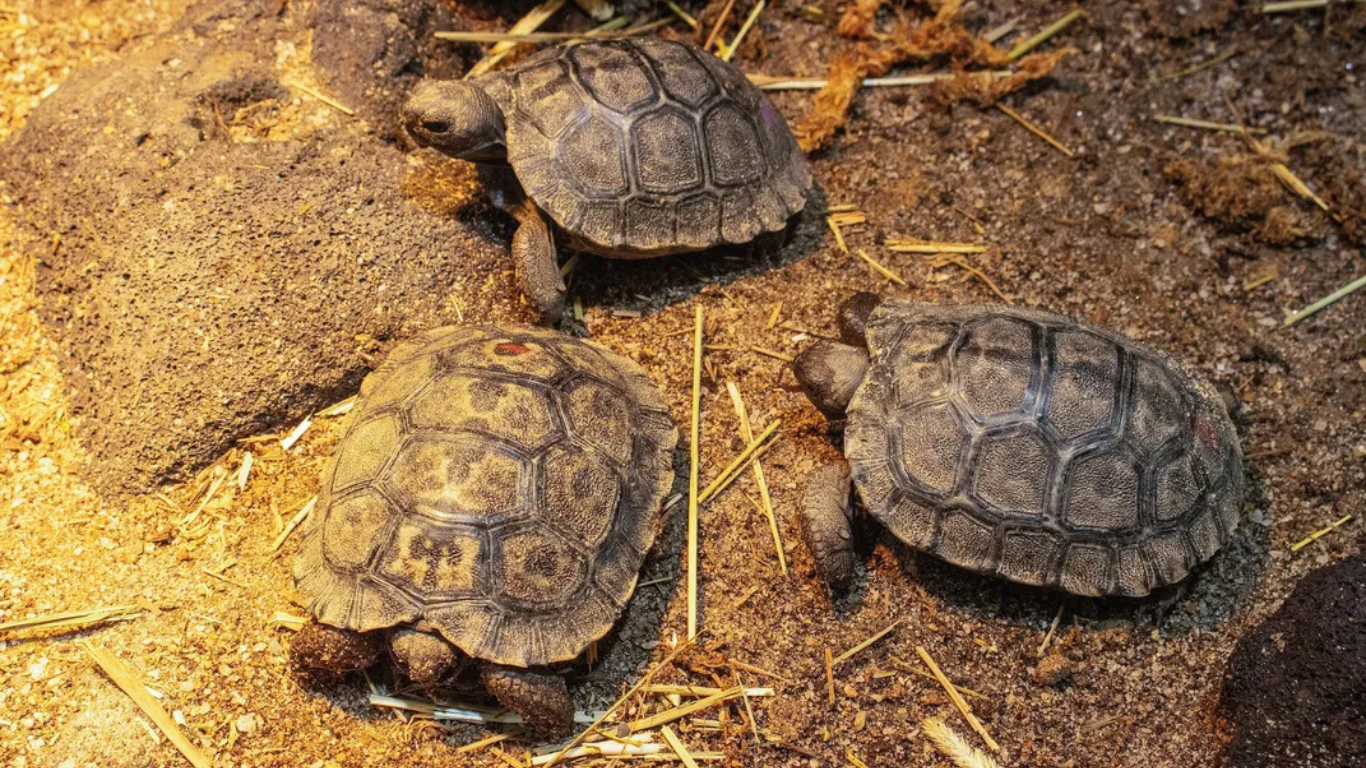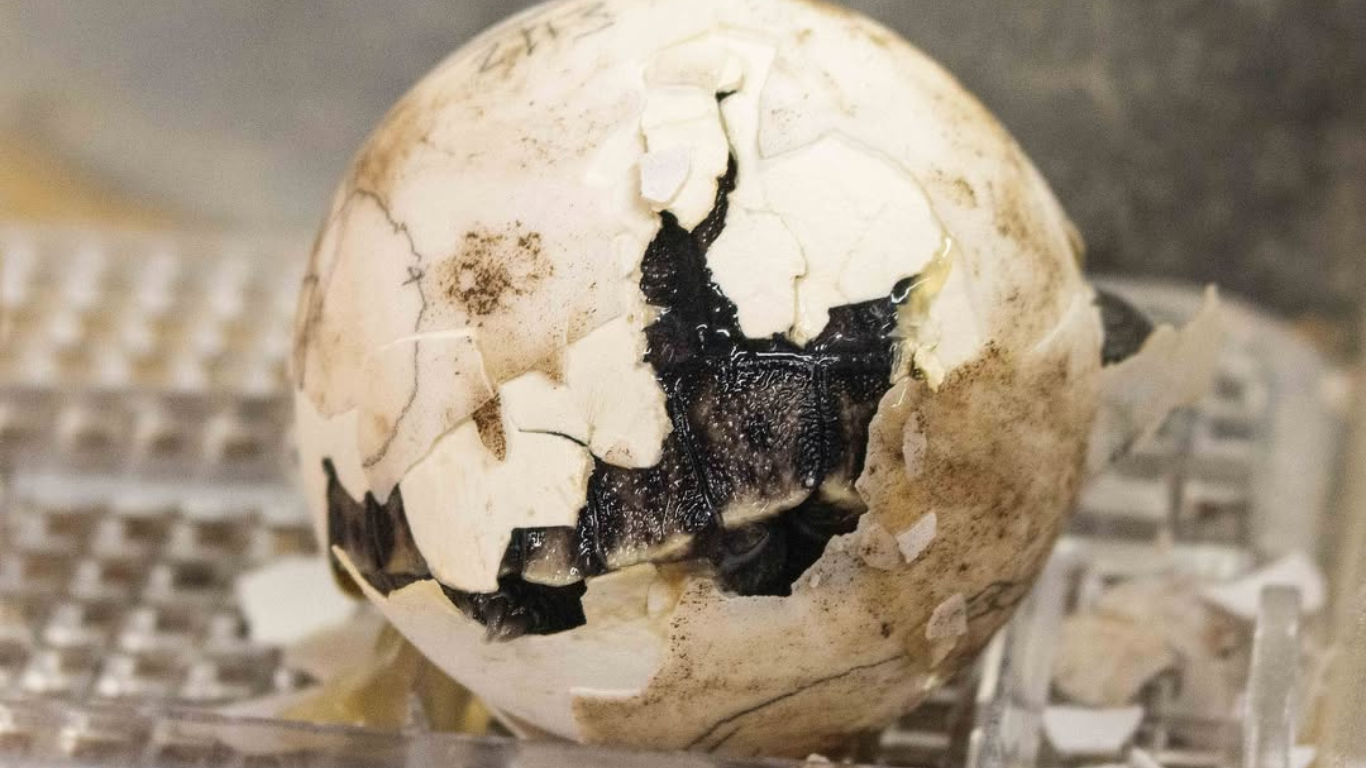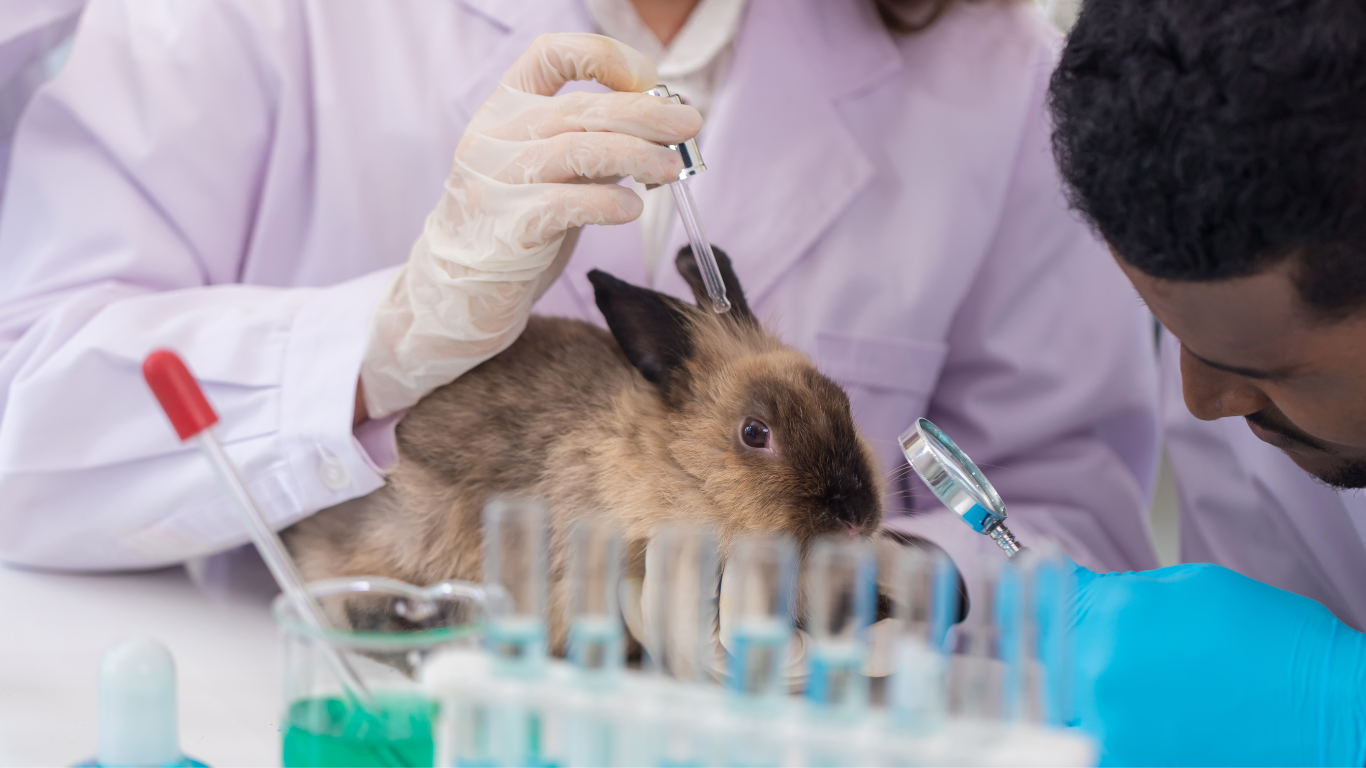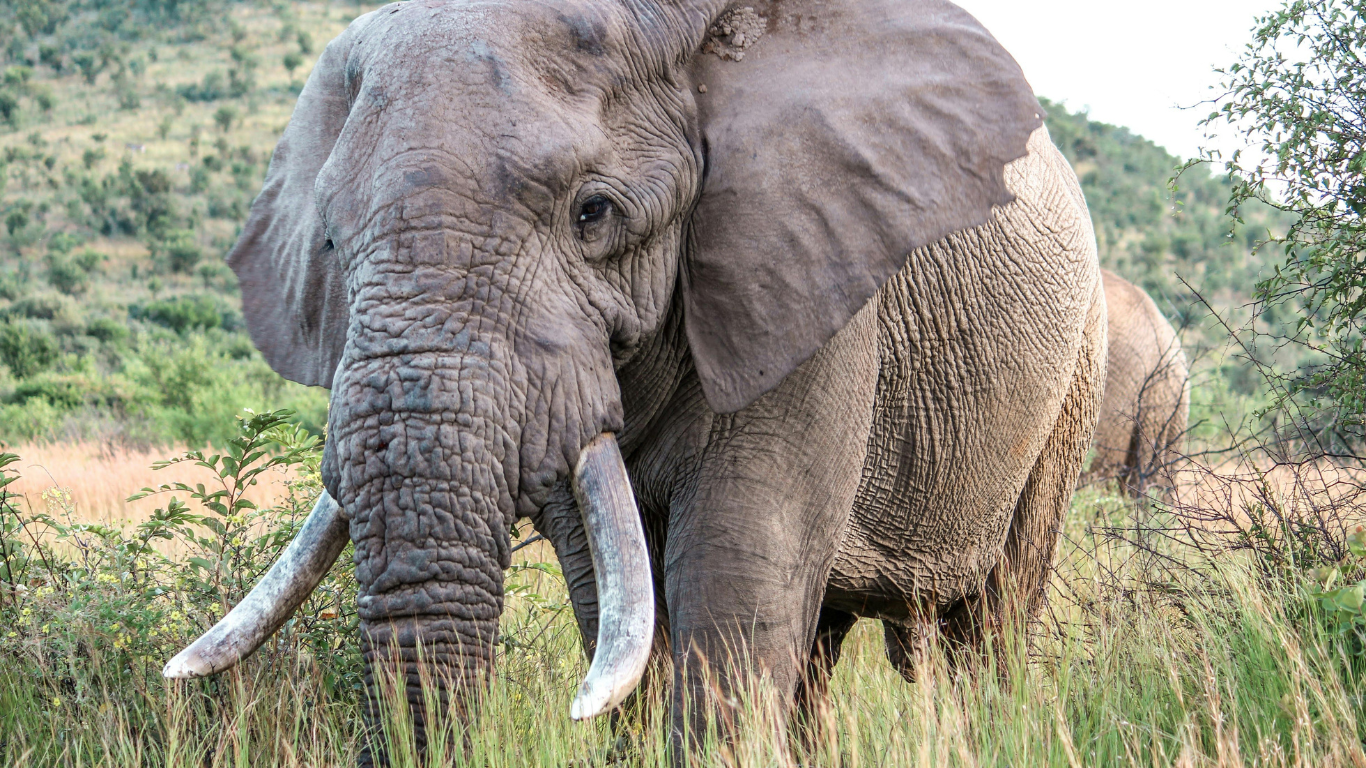Article written by Sarah Kuta
Originally published by Smithsonian Magazine (Apr 4, 2025)
Proud parents Mommy and Abrazzo are both nearly 100 years old, but they’re contributing to Galápagos tortoise conservation at Philadelphia Zoo
The world’s population of critically endangered Galápagos tortoises just got a little bigger.
This week, Philadelphia Zoo is celebrating the hatching of four Western Santa Cruz Galápagos tortoises (Chelonoidis niger porteri). The baby reptiles—all females—are a beacon of hope for their species.
Before the youngsters hatched, U.S. zoos had a combined total of only 44 Western Santa Cruz Galápagos tortoises, “so these newest additions represent a new genetic lineage and some much-needed help to the species’ population,” says Ashley Ortega, who coordinates the captive Galápagos tortoise breeding program for the Association of Zoos and Aquariums (AZA), in a statement from the zoo.
The eggs were laid by an elderly female named, fittingly, Mommy. But until now, she had never been a mother. Caretakers believe she’s around 97 years old—which likely makes her the oldest first-time mom of her species. Biologists also consider Mommy to be one of the most “genetically valuable” Galápagos tortoises in the AZA’s breeding program.
Mommy has lived at the Philadelphia Zoo for more than 90 years. After hatching in the wild in the Galápagos Islands, she was brought to Pennsylvania by a man named Milton W. Holden on April 23, 1932.
At the time, she weighed 40 pounds. Today, she tips the scales at 284 pounds.

The hatchlings’ father is Abrazzo, who is estimated to be around 96 years old. His origin story is a bit murky, but the first records for the turtle dad come from the Gladys Porter Zoo in Texas in April 1929, reports USA Today’s Phaedra Trethan. He’s been at Philadelphia Zoo since December 2020, when he was transferred from the Riverbanks Zoo and Garden in South Carolina.
When caretakers first introduced Abrazzo and Mommy in 2022, the two elderly tortoises didn’t immediately hit it off. Abrazzo, it seemed, was out of practice.
“At first, it was clear that he didn’t quite know what he was doing,” says Rachel Metz, Philadelphia Zoo’s vice president of animal well-being and conservation, to the Washington Post’s Andrea Sachs. “He was backward.”
But, eventually, Abrazzo and Mommy—the two oldest animals at the zoo—figured out how to mate. Starting in 2023, Mommy laid three clutches of eggs, but none of them hatched.
Then, in November 2024, she laid another clutch. Zoo staffers collected the 16 billiard ball-sized eggs and incubated them at different temperatures, since the sex of tortoise hatchlings is affected by heat. Half were incubated below 82.4 degrees Fahrenheit to produce males, and half were incubated above 85.1 degrees to produce females.
The first egg hatched on February 27, followed soon after by three siblings. All the eggs that have hatched so far were incubated as females. But more could hatch in the coming weeks, according to the zoo.
For now, the babies are being kept out of public view in the zoo’s Reptile and Amphibian House, under the watchful eye of the animal care team. They’re eating and growing as expected, with each weighing a little less than three ounces—or about as much as a chicken egg.
The hatchlings will be officially introduced to the public on April 23, which also coincides with Mommy’s 93rd anniversary at the zoo. They’re expected to remain at the zoo for at least five years.
The last time Western Santa Cruz Galápagos tortoises hatched at an AZA-accredited zoo was in 2019 at Abrazzo’s former home, the Riverbanks Zoo and Garden in South Carolina. San Diego Zoo, Zoo Miami, and Honolulu Zoo also have breeding pairs of Western Santa Cruz Galápagos tortoises; Philadelphia Zoo also has another adult female named Little Girl, as well as two Aldabra giant tortoises (Geochelone gigantea) named Wilma and Betty.
In the wild, an estimated 3,400 Western Santa Cruz Galápagos tortoises live on the southwestern tip of Santa Cruz Island, according to the International Union for Conservation of Nature. They represent just one of several subspecies of Galápagos tortoises. Scientists believe these giant reptiles traveled from mainland South America to the remote volcanic archipelago roughly two to three million years ago, according to the nonprofit Galápagos Conservation Trust.

It’s not clear how they got to the Galápagos, which today are located roughly 600 miles west of Ecuador’s coast. But, once they arrived, the giant tortoises ended up on different islands. Cut off from the mainland population—and from each other—the tortoises evolved into 14 or 15 distinct subspecies. But their populations plummeted in the 18th and 19th centuries, as buccaneers and whalers nabbed tortoises for meat and oil.
Lonesome George, the world’s last Pinta Island tortoise, died in 2012 at around 100 years old. Today, 13 subspecies remain, according to the Philadelphia Zoo.
Concerted conservation efforts are underway to help the archipelago’s famous tortoises rebound. In addition to the breeding programs, scientists are taking steps to help protect the reptiles from introduced species. Rats, pigs, dogs, and ants prey on tortoise eggs and hatchlings in the wild, while donkeys, goats, cattle, and invasive plants disrupt their habitat.
As for Abrazzo and Mommy back in Philadelphia, they may just be getting started. Scientists suspect Galápagos tortoises can live to be up to 200 years old—which means it’s possible the couple could become parents again. In the meantime, conservationists are hopeful that their first hatchlings will “be a part of a thriving population of Galápagos tortoises on our healthy planet 100 years from now,” says Jo-Elle Mogerman, the zoo’s president and CEO, in the statement.
Banner credit: Philadelphia Zoo



